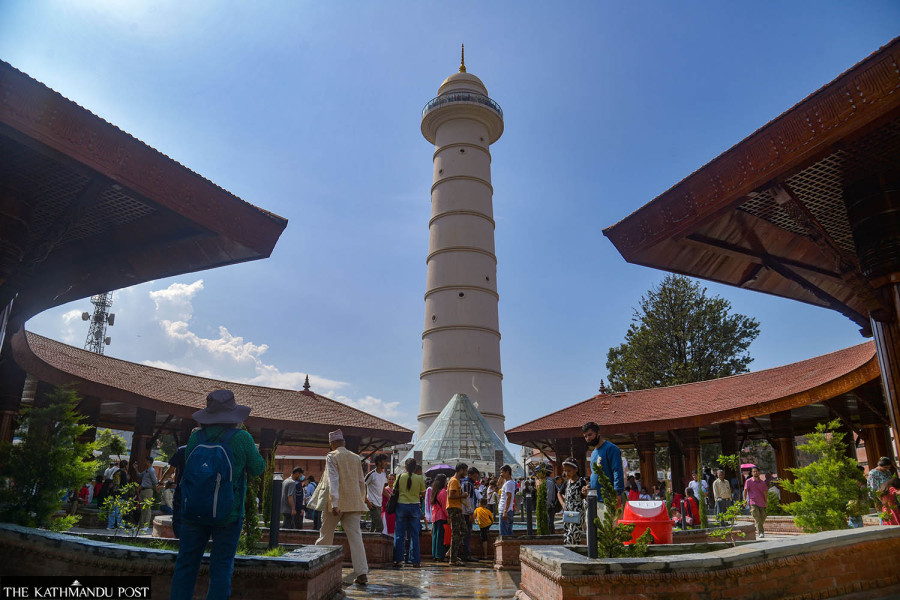Kathmandu
Dharahara begins charging entry fees
The fees differ for Nepali citizens, nationals from SAARC and other countries as well as for commercial activities.
Bimal Khatiwada
Dharahara, which reopened to the public on Constitution Day this year, has started charging entry fees from Sunday. Over 90,000 people have climbed the new iconic tower for free since it opened on September 19, but visitors will now need to pay Rs200 per person. Students, senior citizens, and persons with disabilities will be given a 50 percent discount.
The Ministry of Urban Development said a fee for visitors from SAARC countries is Rs500 per person, while those from non-SAARC countries will have to pay Rs1,000 each. Entry into the Dharahara premises will cost Rs50.
Fees for commercial activities are higher. For instance, it has been set at Rs5,000 per hour for videography, Rs1,000 per hour for photography, and Rs5,000 per hour for non-commercial advertisements on the Dharahara tower.
Prakash Aryal, director of the Central Project Implementation Unit (Building and Housing) under the ministry, said that visitors may sometimes face delays as the new system is in the initial stage of implementation. “The time required to manage operations after implementing the fee system might cause delays for those climbing Dharahara,” Aryal said. Visitors can access the tower between 10am and 4pm, but operating hours may be adjusted later.
The historic tower will remain closed every Wednesday.
The International Convention Centre in New Baneshwar will look after the management until a dedicated committee is formed.
The government has declared Dharahara and five other structures, including Jhapa’s Damak View Tower, as ‘special structures’. The Urban Development Ministry has issued an order to facilitate their operation under a public-private partnership model, proposing to lease their management to private entities through competitive bidding.
“Minimal fees have been introduced to cover operational expenses such as utilities, staff salaries, and maintenance,” said Mani Ram Gelal, secretary at the ministry. “The state does not intend to make a profit, only to recover costs.” He said it would take at least four months for a private operator to take over once the process is completed.
“We cannot provide free access indefinitely, as there are expenses for water, electricity, and staff. While not seeking profit, the fees will help cover operational costs,” said Gelal.
Aryal said that by adjusting the schedule and deploying more staff, up to 3,000 visitors could be accommodated daily. “Daily crowds were overwhelming during the free entry period,” he said. “Now we’ll see how the visitor numbers change after introducing fees.”
The rebuilt tower, equipped with two lifts, still faces occasional technical problems. Leaks during Tihar, caused by an improperly closed door at the top of the tower, temporarily affected the lifts, but the issue has since been resolved.
Online ticketing is expected to be introduced within a month. “Until then, visitors will need to buy tickets at the site,” Aryal said.
The Dharahara reconstruction is nearly complete, but some electrical work remains pending. Aryal assured us that the pending work would not affect visitors climbing the tower.
The iconic structure, which is historically taken as a major landmark of the capital city Kathmandu, was destroyed by 2015 earthquake. The tower, located at the heart of the City, was rebuilt and reopened to the public nine years after the natural disaster.




 20.78°C Kathmandu
20.78°C Kathmandu












